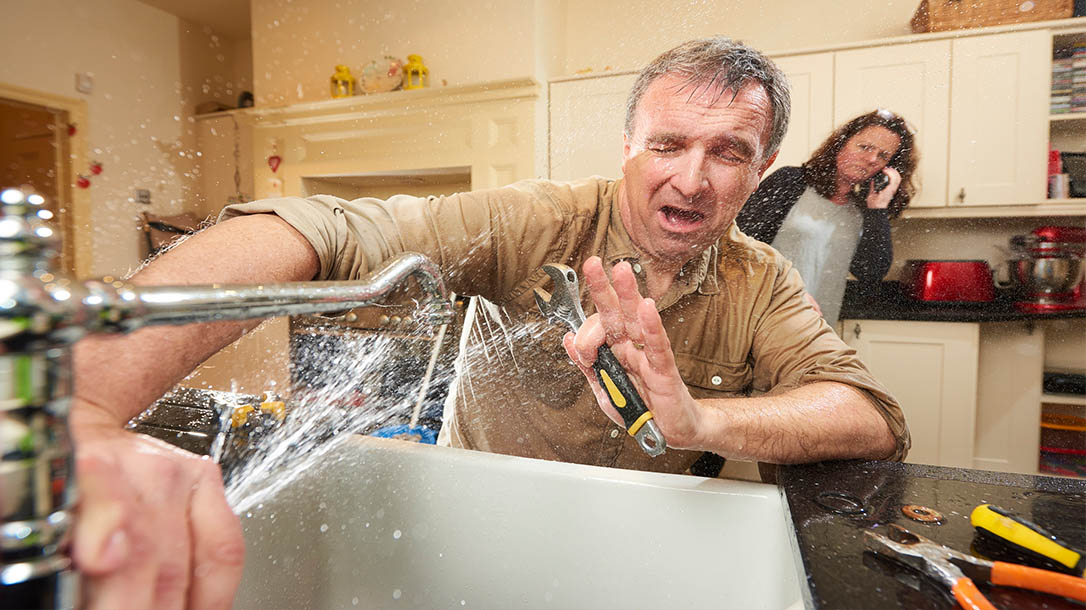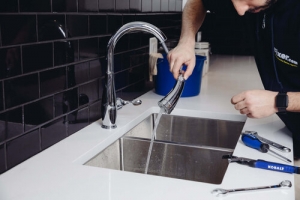Which It's Important to Resolve a Malfunctioning Faucet
Which It's Important to Resolve a Malfunctioning Faucet
Blog Article
Here below you can find a good deal of high-quality data when it comes to Why Are My Faucets Dripping (And Can I Fix It Myself)?.

Dripping faucets could look like a small inconvenience, yet their impact goes beyond simply the nuisance of the sound. From wasting water to sustaining unnecessary financial prices and health and wellness risks, overlooking a leaking tap can cause various effects. In this short article, we'll look into why it's important to address this typical house issue without delay and efficiently.
Wastage of Water
Ecological Impact
Trickling taps contribute substantially to water wastefulness. According to the Environmental Protection Agency (EPA), a single tap trickling at one drip per secondly can waste more than 3,000 gallons of water annually. This not only strains water resources but also impacts environments and wild animals depending on them.
Step-by-Step Overview to Dealing With a Dripping Tap
Devices Needed
Before attempting to fix a leaking faucet, gather the necessary devices, consisting of an adjustable wrench, screwdrivers, replacement components (such as washing machines or cartridges), and plumber's tape.
Typical Faucet Issues and Their Solutions
Recognize the kind of faucet and the specific problem triggering the drip. Usual problems include worn-out washers, corroded valve seats, or faulty O-rings. Describe maker guidelines or on the internet tutorials for step-by-step assistance on repair work.
Financial Costs
Increased Water Bills
Past the ecological effect, leaking faucets can blow up water costs significantly. The collected wastage over time converts right into higher utility expenditures, which might have been prevented with prompt repair services.
Potential Residential Or Commercial Property Damages
Additionally, prolonged trickling can lead to damage to fixtures and surfaces surrounding the faucet. Water build-up can cause staining, corrosion, and also structural problems if left neglected, resulting in extra fixing expenses.
Wellness Concerns
Mold And Mildew and Mildew Growth
The continuous visibility of moisture from a leaking tap creates an ideal environment for mold and mildew development. These fungis not only compromise interior air top quality yet also present wellness threats, specifically for people with respiratory system problems or allergies.
Waterborne Illness
Stationary water in trickling faucets can come to be a breeding place for bacteria and various other pathogens, boosting the threat of waterborne diseases. Pollutants such as Legionella germs grow in stationary water, possibly leading to major health problems when consumed or breathed in.
Do it yourself vs. Expert Repair service
Pros and Cons of DIY Repair
While some might try to take care of a leaking faucet themselves, DIY fixings feature their very own set of obstacles. Without appropriate knowledge and devices, do it yourself attempts can exacerbate the concern or result in incomplete repair services, lengthening the problem.
Benefits of Working With a Professional Plumber
Employing an expert plumber makes sure that the underlying cause of the dripping faucet is attended to effectively. Plumbings have the expertise and equipment to diagnose and repair faucet issues effectively, saving time and reducing the danger of additional damage.
Ecological Duty
Specific Payment to Preservation
Taking obligation for repairing dripping faucets aligns with more comprehensive initiatives toward water conservation and environmental sustainability. Every person's activities collectively make a significant effect on protecting priceless sources.
Lasting Living Practices
By focusing on punctual repairs and embracing water-saving routines, people contribute to sustainable living practices that benefit both present and future generations.
Preventive Measures
Regular Upkeep Tips
To avoid leaking taps, carry out routine maintenance such as cleansing aerators, checking for leaks, and replacing damaged components immediately. Furthermore, think about setting up water-saving devices or updating to extra efficient fixtures.
Relevance of Prompt Repairs
Attending to trickling faucets as soon as they're seen stops more water waste and potential damages, ultimately conserving both water and money over time.
Influence On Property Value
Assumption of Well-Maintained Residential Or Commercial Property
Keeping a residential or commercial property in good condition, including addressing upkeep concerns like leaking faucets, enhances its regarded worth and value among possible purchasers or renters.
Influence on Resale Worth
Properties with properly maintained plumbing fixtures, including taps, command higher resale worths in the realty market. Addressing leaking faucets can add to a positive perception throughout residential property inspections and arrangements.
Conclusion
Attending to a dripping faucet surpasses mere benefit; it's an essential step towards conserving water, decreasing monetary prices, and safeguarding health and wellness and building. Whether with do it yourself fixings or specialist assistance, taking action to repair leaking faucets is a little yet impactful method to promote accountable stewardship of resources and contribute to a healthier, much more sustainable future.
Most Common Reasons for a Leaky Faucet and How to Stop the Drip
Whether it’s your kitchen faucet leaking or a bathroom faucet leaking, one leaky faucet can waste anywhere from three to 30 gallons of water every single day. If the constant drip-drip-drip doesn’t get your attention, your water bill will. The good news is that, by following a few simple steps, chances are pretty good you can fix the problem yourself.
Why is it dripping?
Before you start taking things apart, let’s break down some of the most common causes of a leaky faucet.
Bad O-ring.
A cartridge is a valve that controls the flow of water into the faucet spout. On cartridge faucets there’s an O-ring—the little disc attached to the stem screw that holds the faucet handle in place. If it’s loose or worn-out, it can cause your sink handle to leak. Of course, the cartridge itself could be worn out. If that’s the case, make sure you replace it with the exact same kind.
Corroded valve seat.
The valve seat connects the faucet and the spout. If the leak seems to be coming from the spout, it might be because a buildup of water sediment has corroded the valve seat.
Worn-out washers or seals.
A leaky spout could be caused by a bad washer that rests against the valve seat. It’s just a matter of time before friction takes its toll. It could also be the wrong size washer or one that’s been installed incorrectly. Water sediments can also corrode inlet and outlet seals.
Water pressure.
If the faucet only drips now and then, or when you turn the handles a certain way, you should probably check your home’s water pressure.
Loose or broken parts.
The adjusting ring and packing nuts in the stream screw can become loose over time, causing your sink handle to leak. Try tightening or replacing the packing nut. If the leak is coming from the pipes underneath the sink, you probably have a broken pipe or fitting. If that’s the case, you should definitely call a plumber.
Know your faucet.
Faucets come in a variety of types. Each one has its own assembly—and its own possible causes of leaks. Learning about the four most common kinds of faucets will help you know how to take them apart and make any repairs.
How to stop a leaky faucet
Fixing that leaky faucet doesn’t have to take a lot of time, money, or expertise. It’s usually a simple matter of replacing a worn-out washer or gasket, a loose O ring, or another part. Chances are really good you can do this yourself if you follow these simple steps.
Shut off the water.
Before you tackle the faucet, cut off the water supply to the sink. There should be one valve for hot and one for cold. Hand-turn them clockwise with your hands till they close. If there are no valves under the sink, head to the basement and shut off the main water supply to the house. Then turn on the faucet until it empties out the water that’s still in the line and you’re ready to start. It’s a good idea to cover the sink drain with a plug or a rag so you don’t lose any small pieces and parts while you’re working.

As a keen person who reads about Why Is It Important To Fix Your Leaking Tap/Faucet?, I assumed sharing that blog post was a smart idea. I beg you take the time to distribute this page if you liked it. Thanks so much for taking the time to read it.
Report this page